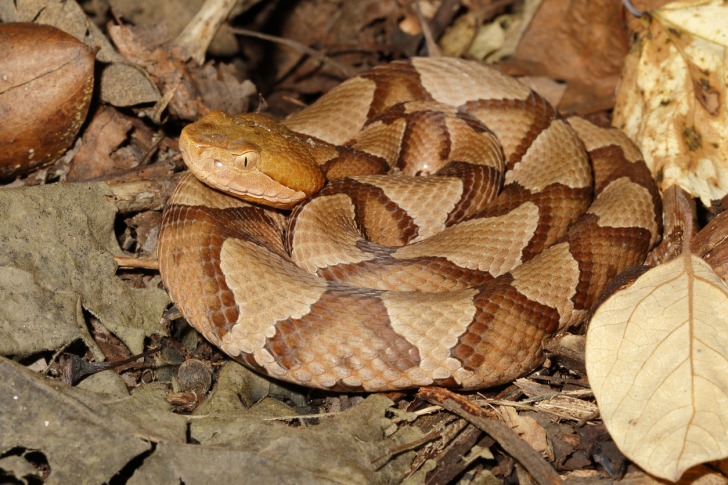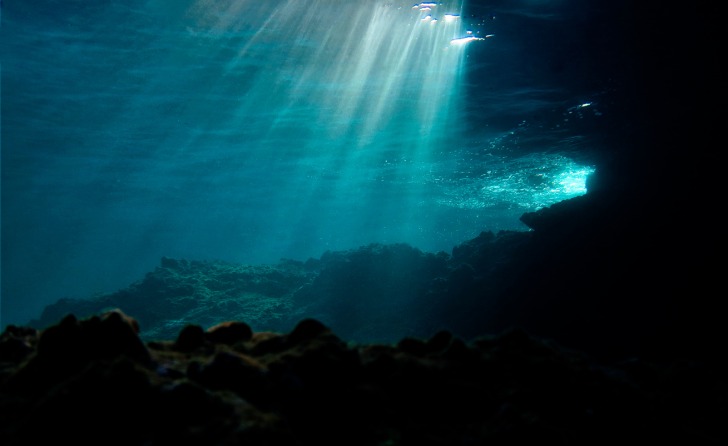The animals in the depths of the ocean have long fascinated and frightened humanity.
Among the myriad of marine creatures, some may wonder if snakes, the slithering denizens of land, find their way into the waters.
Are there snakes lurking beneath the waves, ready to surprise unsuspecting swimmers and divers?
Let’s dive into the depths of this question, exploring fascinating facts, dispelling myths, and providing essential safety tips for those venturing into different aquatic realms.

Contents
Are There Snakes in the Ocean?
Contrary to popular belief, snakes, as we typically envision them, are not found freely roaming in the ocean.
Snakes are fundamentally terrestrial creatures and lack the physiological adaptations necessary for a truly aquatic lifestyle.
While some sea snakes do exist, they are distinct from their land-dwelling counterparts.
Sea snakes, belonging to the subfamily Hydrophiinae, have evolved specialized adaptations, such as a flattened tail for swimming and the ability to breathe through their skin.
However, they predominantly inhabit saltwater environments like seas and oceans, not freshwater bodies.
In freshwater ecosystems, you’re more likely to encounter other aquatic reptiles like turtles, but snakes, as we know them on land, are not natural ocean dwellers.
Therefore, if you’re planning a beach vacation or a deep-sea dive, the prospect of encountering a snake should be low on your list of concerns.
Snake Species in the Oceans
While the majority of snake species are terrestrial, there are indeed some that have adapted to aquatic environments.
Sea snakes are the primary example, with approximately 60 species distributed throughout the Indo-Pacific region.
These venomous creatures are capable swimmers, often found near coral reefs and rocky coastlines.
Despite their venomous nature, sea snakes are generally not aggressive towards humans and will only bite in self-defense.
This means that if you see one you need to stay away.
Is it Safe to Go on a Trek Near Coastal Areas?
When considering safety during treks near coastal areas, it’s crucial to address potential dangers beyond snakes.
While the odds of encountering a snake are relatively low, other hazards demand attention.
Coastal environments may harbor a variety of wildlife, from crabs and jellyfish to larger marine creatures.
Additionally, the uneven and sometimes slippery terrain, unpredictable tides, and the risk of falling from cliffs can pose significant threats.
To ensure a safe trek, it’s essential to be aware of your surroundings, wear appropriate footwear, and follow designated trails.
Stay informed about local wildlife, adhere to safety guidelines, and, if possible, explore these areas with an experienced guide.
Being prepared and vigilant will enhance your overall safety during coastal adventures.
The same is true if you are diving.
Particularly in an unfamiliar area.
A guide will help keep you safe and aware of what is happening around you.
This can keep you and your family out of harm’s way.

Interesting Snake Facts in the Ocean
Even if you’re in a location where snakes aren’t prevalent, the ocean is rife with myths and tales of sea serpents.
Throughout history, sailors have reported sightings of mysterious, elongated creatures swimming alongside their ships, fueling maritime legends.
These myths often add a touch of intrigue to oceanic folklore, captivating the imagination of seafarers and storytellers alike.
One such tale is the legend of the Lusca, a mythical sea creature believed to inhabit underwater caves in the Caribbean.
Described as a half-shark, half-octopus creature with a serpentine body, the Lusca embodies the rich tapestry of sea myths that have woven their way into the maritime narrative.
3 Safety Tips for Exploring Nature in or Near the Ocean
Stay on Designated Paths
Stick to established trails and paths to minimize the risk of encountering hazardous terrain and wildlife.
Straying off the beaten path can lead to unforeseen dangers and disturbances to the local ecosystem.
Be Wildlife-Aware
Familiarize yourself with the local wildlife and their habits.
While snakes may not be a primary concern near coastal areas, other creatures such as crabs, jellyfish, and even larger marine animals can pose threats.
Respect their habitats and maintain a safe distance.
When going snorkeling or diving, particularly around reef habitats, go with a guide.
They will keep you aware of the animals around you that you need to be careful of.
While this may seem like a lot.
It can keep you safe and sound.
Emergency Preparedness
Carry essential safety gear, including a first aid kit, communication devices, and emergency contacts.
Being prepared for unforeseen circumstances ensures you can respond effectively to any challenges that may arise during your exploration near the ocean.
If you are diving or snorkeling, these can be left on the boat in the event of an emergency.
Your tour guide will also have the responsibility of keeping you safe while you are in and out of the water should anything happen.
The ocean is not a domain where conventional snakes thrive.
While sea snakes exist in specific regions, the likelihood of encountering them during a beach vacation or coastal trek is minimal.
Understanding the local wildlife, adhering to safety guidelines, and being aware of potential hazards contribute to a safer and more enjoyable exploration of nature near and in the ocean.
Also, following the directions of your tour guide will make your journey more enjoyable and safer.
The bottom line is that, with the necessary precautions, you shouldn’t have to worry too much about sea snakes.
Frequently Asked Questions
How many people die every year from snake bites?
According to the World Health Organization, an estimated 81,000 to 138,000 people die each year from snake bites globally.
The majority of these incidents occur in rural, low-resource areas where access to medical treatment is limited.
Are all sea snakes venomous?
Yes, all sea snakes are venomous.
However, most sea snakes are not aggressive and pose minimal danger to humans.
Their venom is primarily used for hunting prey, and they only bite in self-defense when threatened.
Can snakes survive in saltwater?
Generally, snakes cannot survive in saltwater.
Most snake species are adapted to freshwater environments and cannot tolerate the high salt concentration in seawater.
Sea snakes, however, have evolved specialized adaptations to live in saltwater and are equipped to handle the challenges of marine life.
This is why you need to still be aware of your surroundings in fresh or brackish water.











